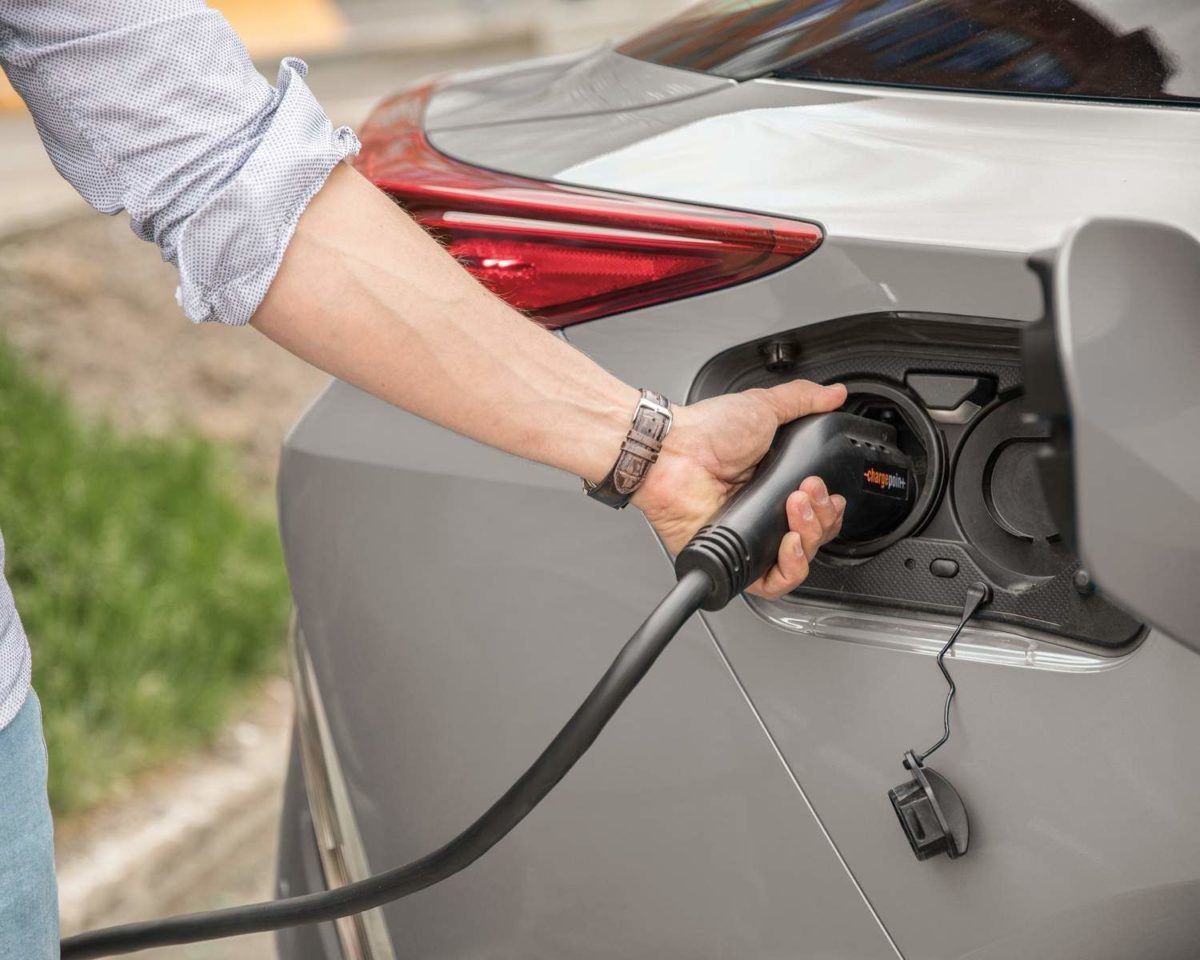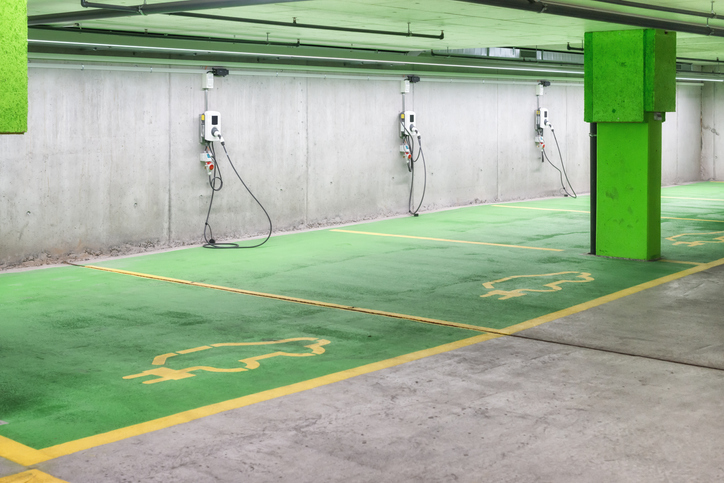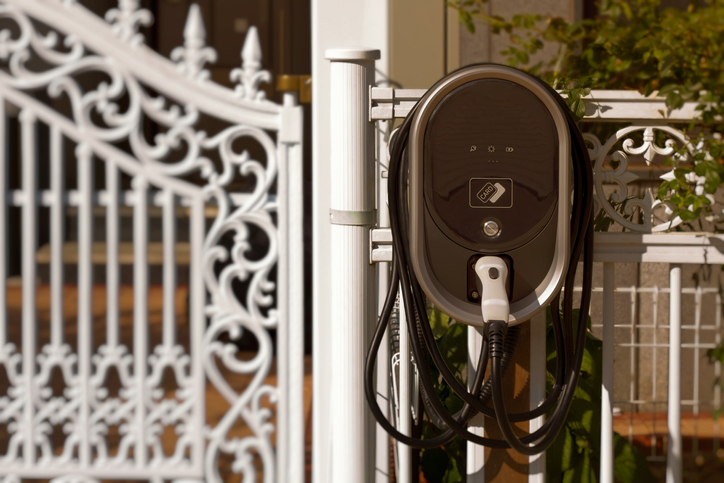The Basics of EV Chargers

Refueling a gasoline vehicle has become second nature to any owner. It’s quick, simple, and gas stations are found in all corners of the world. However, with the surge in popularity of electric vehicles, recharging them is a bit more complicated. In this article, we’ll break down the different types of chargers, how to recharge your vehicle and give you some tips on how to make the EV charging process a little bit easier.
EV Chargers
Level 1 – 120 Volt
Level 1 chargers are the slowest and plug directly into a normal wall socket. The specialty cable is included with the electric vehicle though more manufacturers are starting to not include them as it takes too long to recharge. They will still be available for purchase as an accessory or through third party options.
Level 1 chargers recharge at a rate between 0.8 – 1.3 kW. This rate varies on your home power supply. At this slow rate of charge, an electric vehicle like the Mercedes-Benz EQS will take 2 to 3 days to fully recharge from 10% to 100%.
These types of chargers, or more accurately charging cables, are not ideal for battery electric vehicles (BEVs). But they are suitable for plug-in hybrid vehicles. With their smaller batteries, a PHEV can be recharged from 0% to 100% in 8 – 12 hours (depending on the battery size and home power supply).
Level 2 – 240 Volt

Level 2 chargers provide 4 to 8 times more power than level 1 chargers. These are most commonly found around a city at public charging stations or can be installed at home. They can provide from 6 – 19 kW of power but more commonly, level 2 chargers provide around 7.6 kW of power. These types of chargers can be wired into your home’s 240-Volt power supply, the same as washer & driers for example. However, it is highly recommended that these be installed by a professional and licensed electrician in your home. Certain home chargers are eligible for provincial and/or municipal incentives.
All level 2 chargers, and level 1 charging cables, use the same plug for electric vehicles. This is called an SAE J1772 connector. A word of note, Tesla’s require an adapter as they use a proprietary connector. From the most common 7.6 kW level 2 chargers, the average battery electric vehicle can be recharged from 10% to 100% in around 12 – 14 hours. A PHEV can be recharged in as little as 2 hours though more commonly it will take just over 3 hours.
Level 3 – DC Fast Chargers
Level 3 chargers are the fastest of the different types of chargers. These provide from 50 kW to 350 kW of power. These chargers are only available at public locations or businesses. It is highly unlikely to see one installed at home as these can cost well over $10,000 to install. These chargers can recharge a BEV from 10% to 80% in as little as 18 minutes. But 350 kW chargers and vehicles that can accept that much power are very uncommon at the time of writing this article. 50 kW chargers and vehicles that can accept up to 150 kW of power are the most common and they can be recharged from the same range in around 40 minutes.
The reason why auto manufacturers provide charging times from 10% to 80% battery charge instead of 100% is because the charging speed from 80% to 100% significantly slows down at DC chargers. The time to charge from 80% to 100% is almost just as long as it is from 10% to 80%.
Level 3 DC chargers have two types of plugs. CHAdeMO and SAE Combo (or CCS). CHAdeMO is less common as it is only used by the Nissan Leaf and older models of the Mitsubishi Outlander PHEV and Kia Soul EV. All other plug-in hybrids and battery electric vehicles from the Hyundai Ioniq 6 to the Porsche Taycan use SAE Combo plugs. Again, Tesla uses a proprietary plug.

How to use an EV charger
Using an EV charger can feel daunting if you’ve never used one before. The first thing that you need to know is that they generally don’t accept direct credit or debit card payments. You have to pay through an app on your smartphone which you can download from the manufacturer of the charger. Once you do that, the app will communicate with the charger and allow you to start charging. You can also order a card to use with the specific charger that is supplied by the brand manufacturer.
To charge an EV, simply pull into a marked charging spot and turn off your vehicle. Most chargers allow you to pull the plug out of the charger and plug it into your vehicle while others require you to select the charger from the app in order to unlock the plug from the charger. Once you’ve plugged into the charger, you can begin charging through the app or by tapping the special supplied card from the charger manufacturer. The charging rate and cost as displayed on the charger or on the app.
Once you’ve finished charging, you can push the “Stop” button on the charger and then simply unplug the cable from your EV. This process is the same for both level 2 and level 3 chargers. You may also find chargers that do not require payment for charging but they may still require an app or special card for activation.
Tips for Charging
- Download apps and create accounts for the different charger manufacturers in your area. This will save time when you arrive at a charging station.
- In Metro Vancouver, ChargePoint, Flo, Greenlots, Petro-Canada, BC Hydro, and Tesla are the most common.
- Additionally, download an app called PlugShare. This is the most comprehensive and most up to date tool for finding charging stations, as well as their status, in your area.
- When charging from home, charge during off-peak hours to save a bit more money on electricity.
- When charging from a level 3 DC charger, only recharge your vehicle up to 80%. You will not see any cost savings when charging beyond that level from a DC charger. Instead, top it up with a level 2 charger or a home plug.
- Do not park in a marked charging spot if you do not plan to recharge your vehicle.
- Keep close by in case you need to move your vehicle once it is fully charged so that others may use the charger.
- Plan long road trips ahead of time. Get a rough estimate of your trip distance and see what chargers are available along your route.

